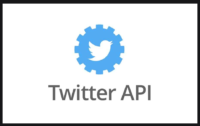Effective Data Collection Techniques
What is data collection?
Data collection is the process of gathering ,analyzing and evaluating information from relevant sources to answer research questions, test hypotheses, and evaluate outcomes. Effective data collection is crucial for making sound decision and conducting successful research, whether in scientific studies or customers feedback.
In this article we’ll explore the 101 of data collection.
Key Considerations Before Collecting Data
- Purpose and Objective: Clearly define the purpose of the data being collected. Eg understanding customer behavior, improving product quality, improving sales.
- Data Source: Primary, secondary data (new data from surveys or existing data from databases).
- Target Audience: Who or what is being studied with the data being collected.
Common Challenges Faced in Data Collection
Some prevalent challenges which are faced while collecting data include:
- Bias: Response bias when conducting survey or interviewer bias can lead to inaccurate data.
- Data accuracy: Working with data gotten from previous research can pose the question of reliability, relevance and accuracy.
- Time and cost constraints: Collecting data through large-scale surveys or individual interviews can be a time-consuming process
- Data quality issues: Maintaining data quality is crucial for the success of technologies like machine learning
- Inconsistent data: Inconsistencies in data can accumulate and reduce the value of the information if they are not resolved regularly.
Methods Of Data Collection
There are two main methods of data collection: primary and secondary
Primary Method: The primary method involves gathering original data directly from the source or through direct interaction with participants. This approach allows researchers to obtain firsthand information tailored to their specific objectives.
The various techniques for primary data collection include:
- Surveys and Questionnaires: Businesses gather data like product preferences from individuals through face-to-face interactions, phone calls, or emails.
- Interviews: This involve direct conversations between the business and customers, which can be conducted in person, over the phone, or via video conferencing
- Observations: Data on human behavior and interactions can be collected by researchers through observations and recordings. This method is useful when avoiding direct intervention.
- Focus Groups: Gathering feedback through focus groups involves assembling a small group of people who have similar characteristics, and allowing them to openly share their thoughts, impressions, and perspectives on particular subjects in a guided discussion
Secondary Method: Secondary method involves using existing information gathered by others for a different purpose. The data is analyzed and interpreted to extract relevant details.
The techniques for this approach include:
- Published Sources: Books, journals, newspapers, government reports, and other published materials that contain relevant data which can be extracted for analysis.
- Online Databases: Research articles, statistical information, economic data, and social surveys may be collected from online databases for research purposes.
- Government and Institutional Records: Government agencies, research institutions, and organizations often maintain databases or records that can be used for research purposes..
- Past Research Studies: Researchers can review and analyze the data gotten from previous research and their findings to extract information and gain insights.
Importance of data collection for businesses and organizations
- For better customer retention
- Better decision-making
- Discovering new customers
- Improved customer experience
- For improved marketing strategies
- For Increased profits
Conclusion
Effective data collection, whether through primary or secondary methods, lays the groundwork for informed decision-making, insightful research, and strategic business initiatives.
Businesses can use various methods to gather valuable data that guides their strategies and boosts growth and profitability. However, challenges like bias, inaccurate data, and time constraints can hinder this process, making it crucial to address these issues early on.
By understanding different data collection techniques and considerations, companies and researchers can acquire accurate and reliable data that supports sound strategies and meaningful outcomes.







